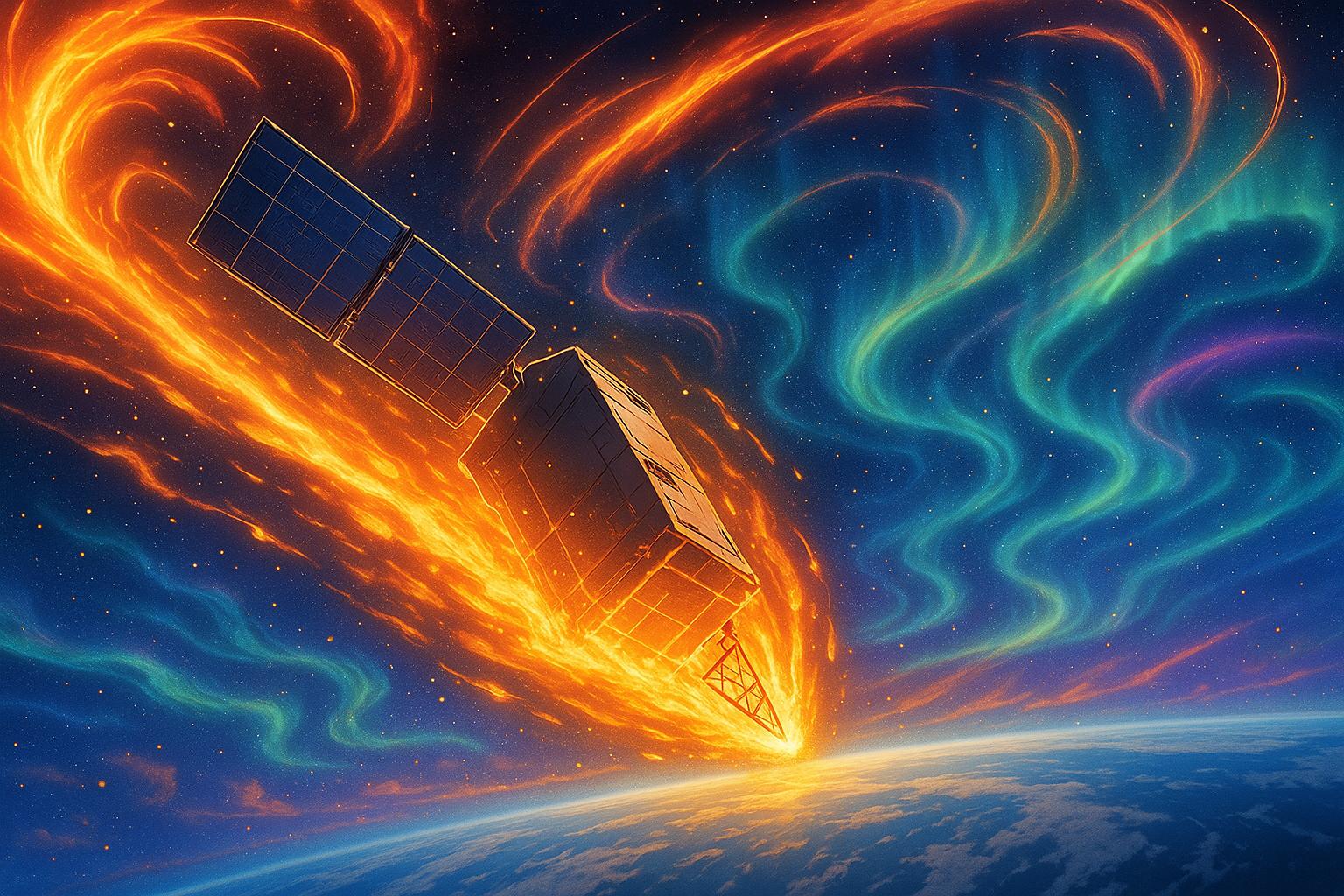The expanding constellation of satellites orbiting Earth now faces an unexpected adversary: the sun. As the solar cycle ascends towards its peak in solar maximum, the sun's emanations, ranging from solar flares to coronal mass ejections, are becoming a significant concern for satellite operators. This situation not only calls into question the future viability of space commerce but also poses potential risks to the safety of our skies—and the farmlands directly below.
A particular incident underscores this dilemma. In August 2024, a 2.5-kilogram fragment from a SpaceX Starlink satellite was discovered on a Canadian farm, marking a rare instance where debris made it back to Earth intact. With the satellite sector experiencing explosive growth—over 7,000 Starlink satellites launched by SpaceX with plans for tens of thousands more—the ramifications of solar activities have become more pronounced. The interaction between solar storms and the upper atmosphere results in increased drag on satellites, significantly reducing their operational lifespans. Research led by Denny Oliveira at NASA's Goddard Space Flight Center has shown that during geomagnetic storms, Starlink satellites may descend to Earth much more rapidly than anticipated. "When we have geomagnetic storms, satellites re-enter faster than expected," Oliveira revealed. This reduction could be as much as 10 days during periods of heightened solar activity, creating a complex challenge for orbital management.
The implications of this accelerated re-entry are profound, particularly as low Earth orbit transforms into a bustling thoroughfare. With an unprecedented number of satellites being launched and deorbited, the frequency of satellite re-entries is increasing. In just a few years, experts predict that re-entries could occur daily. This poses not only logistical questions concerning satellite operation but also safety concerns about the likelihood of debris falling to Earth. According to Oliveira, the rapid descent during solar storms raises the possibility of larger fragments surviving re-entry, suggesting a scenario where operational safety standards must be revisited.
The consequences are compounded by the environmental impact associated with such re-entries. Reports have noted that the burning of satellites can release metallic vapours into the atmosphere, posing another layer of concern regarding atmospheric pollution. In fact, a recent surge of over 120 Starlink satellites deorbiting in January 2025 was directly linked to plans for retiring older models, which raises questions about the balance between innovation and environmental responsibility.
Fellow researchers have pointed out that the current solar maximum represents a unique challenge, as it coincides with the largest satellite constellations ever deployed. Samantha Lawler from the University of Regina emphasised that ongoing measurements and research during this period are crucial. She raised the alarm about the potential for undetected satellite debris, particularly in regions favourable for finding fallen remnants, such as Saskatchewan, which lies directly beneath heavy satellite traffic.
Moreover, the relevance of geomagnetic storms extends beyond satellite re-entry. They also induce unwanted currents in power grids and can disrupt radio signals and GPS systems, issues that have been increasingly recognised as alarming by researchers. Studies have aimed at understanding these phenomena to mitigate their effects on crucial technological infrastructure.
As the landscape of space utilisation evolves, so too must the strategies employed for managing the risks posed by our sun. While rapid satellite re-entries could inadvertently aid operators by clearing out defunct satellites, experts warn that operating below 400 kilometres—known as very low Earth orbit—may become increasingly fraught with challenges. The balance between benefiting from faster orbital decay and ensuring absolute safety in the atmosphere is a delicate one that necessitates rigorous assessment.
In response to growing concerns, NASA has been actively investigating past solar superstorms that significantly altered Earth's atmosphere. The findings have stressed the urgency of preparing satellite infrastructure for the unpredictable nature of solar events, pushing for innovations in satellite design and operational protocols to withstand these disruptions.
Ultimately, the prevailing issue is not merely technical but also ethical—how to harness the benefits of satellite technology while ensuring safety for the environments we inhabit. As the sun continues its unpredictable dance, stakeholders in the space industry must converge to devise comprehensive strategies that prioritise both commercial viability and planetary safety in this era of heightened solar activity.
Reference Map:
- Paragraph 1 – [1], [2]
- Paragraph 2 – [1], [3], [4]
- Paragraph 3 – [1], [5]
- Paragraph 4 – [6]
- Paragraph 5 – [7]
Source: Noah Wire Services
